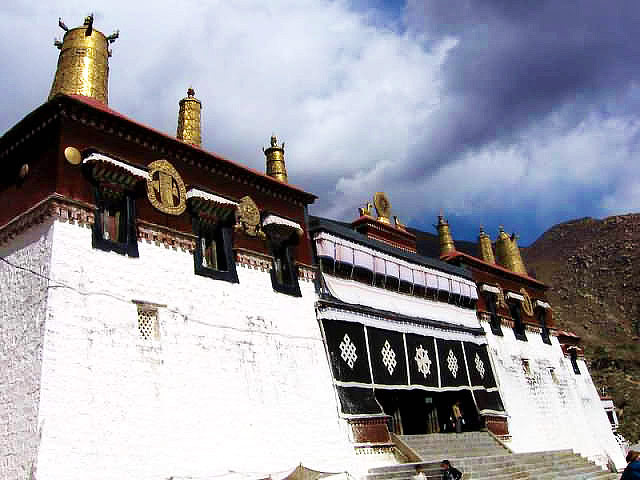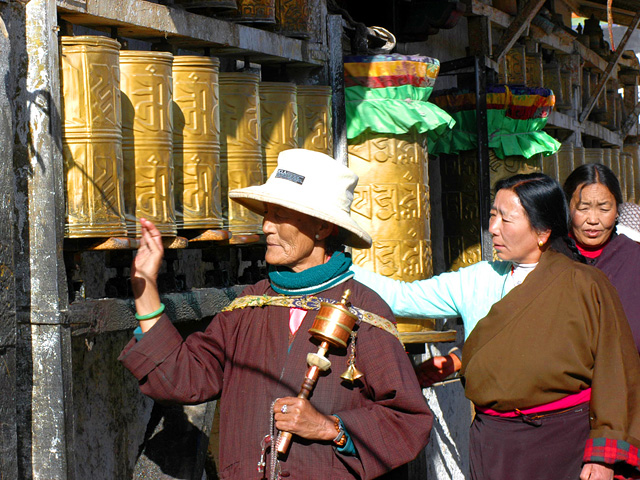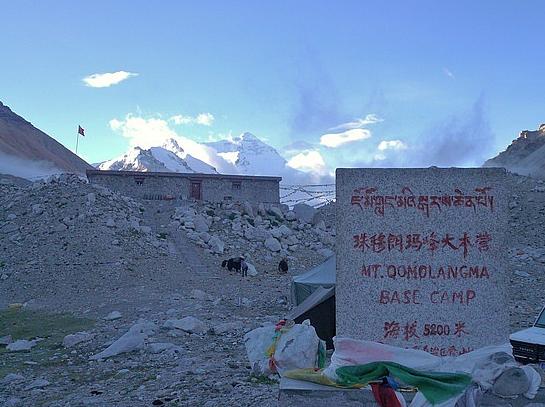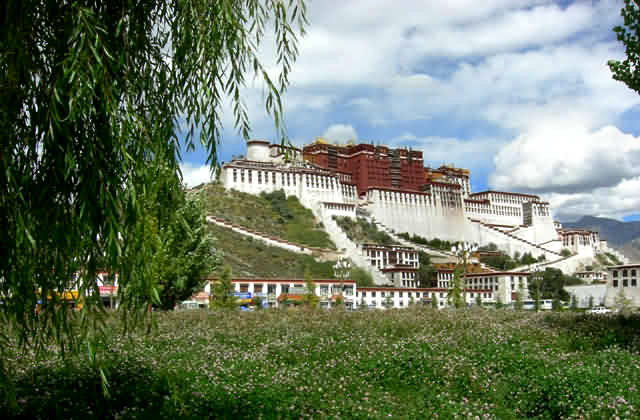Drepung Monastery
Drepung Monastery was known its high standards in academic study, and was called the "Nalanda of Tibet", a reference to the great Buddhist monastic university of India. In the late 1930's, Drepung was divided into four colleges, each housing monks from a different locale. Each college was presided over by an abbot who had been appointed by the late 13th Dalai Lama.
It is considered one of Tibet's 'Three Great Monasteries' (the other two are the Ganden Monastery and the Sera Monastery). Covering an area of 250,000 square meters (61 acres), it held as many as 7,700 monks and possessed 141 farms and 540 pastures in its heyday. It is the largest monastery of its kind in the world. Seen from afar, its grand, white construction gives the monastery the appearance of a heap of rice. As such, it was given the name 'Drepung Monastery' which in Tibetan means "Monastery of Collecting-Rice".
The education system in Zhacangs is set up such that, every year there are eight chances to study the sutra collectively, each time spanning from half a month to a month. Monks are tested before the Kampo in the method of reciting sutras and debating, and based on their performance; receive the degrees of different levels.
 |
| The main hall of the Drepung Monastery |
The monks residing at the monastery had eight opportunities to study the sutra (Buddhist scriptures) together as a group each year. Each mini-course lasted from two weeks to two months. After attending the school for a time the monks had to appear before the head-monk to take tests. Their ability to recite the Buddhist scriptures and debate were two critical parts of the exam. If they passed, they would then receive a degree based on their performance.
The Drepung Monastery houses many cultural relics, making it more beautiful and giving it more historical significance. Statues of famous celebrities in Buddhism are found on the first story of the Coqen Hall, rare sutras on the second story, and a famous conch shell on the third one. All of these add to the mystique of the monastery. In addition to these relics, there are exquisite statues of Tsong Khapa and famous Buddhist leaders and gods, as well as flowery wall-murals which portray the artistic style and wisdom of the Tibetan people.
Select Other Favorite Attractions
Guide for China tour, offers most value & amazing experience. In China, you can rely on us
Copyright © 2001 - 2025. All Rights Reserved to ChinaTourGuide.Com
Hotel Guangzhou | Guizhou Tours | Hong Kong Hotels | 香港酒店 | 广州酒店 | 广州会议酒店 | Indochina Tour
Guide for China tours, offers most value & amazing experience. Chinatourguide.com. Your reliable China tour agency.




